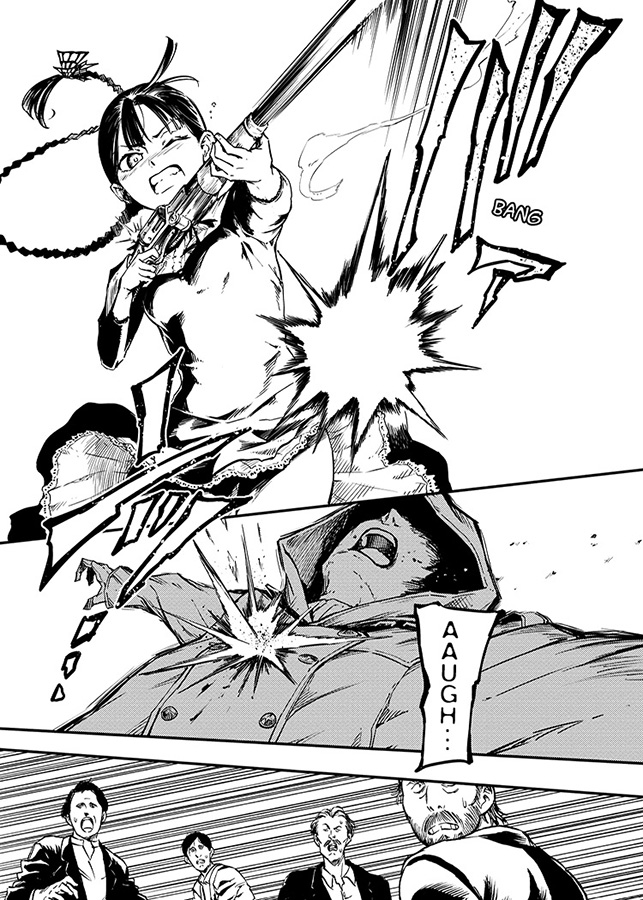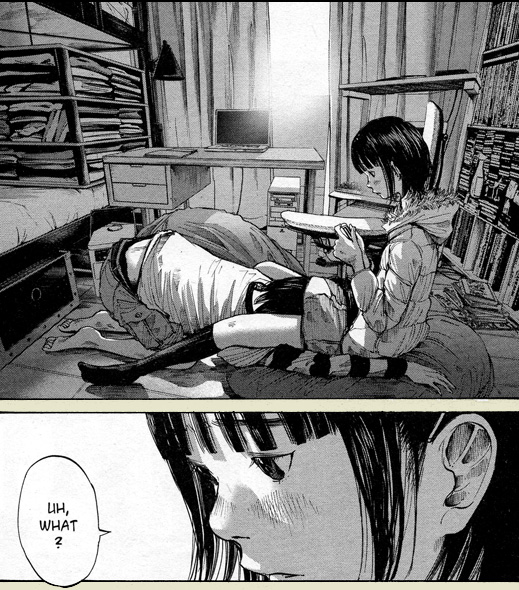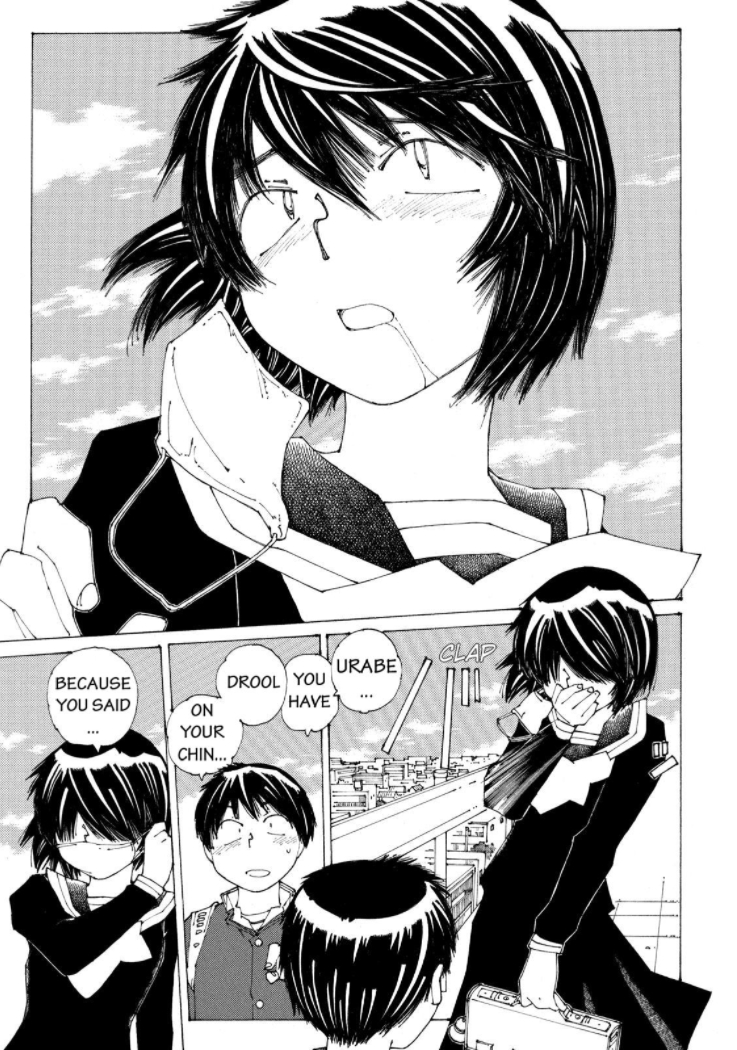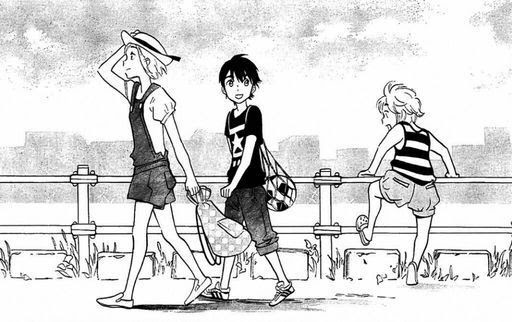We’re back with more Staff Picks, in which we showcase our favorite anime, manga and games from last year. In this installment, Ink and Evan celebrate a year of manga, ranging from dark fantasy to psychosexual drama to absurd slapstick. It’s a diverse mix, but it just scratches the surface of all the great manga that came out in 2016. Enjoy!
Ink
I don’t read much manga, but when I do, the titles that Vertical publishes usually cater to my jam: short-run, mature stories that deal with awkward subjects or subjects awkwardly.

#3: To the Abandoned Sacred Beasts
To be honest, this was the only other manga I read this year. I like a lot about it; the art can be gorgeous, the main character’s gonna grow up to be a bad-ass (she’s already got a good head start by toting around an elephant gun), and the allegorical story is well told. But the very first chapter, specifically the bashful eagerness with which the main character follows her father’s killer into a life of adventure (I’m making it sound silly on purpose), made me discount the title’s seriousness. If the protagonist is going to immediately betray her want for revenge just because her target’s cute, that errs on the side of comedy, and that is definitely not this manga. To the Abandoned Sacred Beasts shows humans turning on those who’ve been helpful — a theme common in fairytales — with a twist that those who have been helpful are now actually harmful … usually. It’s a title that deals with how humanity identifies and deals with varying degrees thereof, and it would be so much better had the creator (also responsible for Dusk Maiden of Amnesia) taken the time to better legitimize the main character’s decision to travel with her father’s killer.

#2: A Girl on the Shore
I’ve been in love with Inio Asano’s storytelling ever since Evan’s review made me read Solanin. To say I enjoyed A Girl on the Shore is as awkward a statement as flipping through the book while on public transit. The manga examines, with great explicitness, two teenagers exploring their sexuality while in a secret friends-with-benefits relationship they maintain because they don’t have anyone else. It’s commentary on the sexual obsession of adolescence as well as how fantasies hurt and bonds grow based around physical intimacy during that time (and in general). This is a grounding look at the awkwardness implicit in initial intimacy, especially at the time where honesty is honestly a tricky definition — an unknown even to the bearer of their individual truth. That is to say, when each of the parties involved do not quite know the entirety of their inner workings. Without celebrating or deriding, this manga spotlights a situation that may be more indicative of a larger problem facing society: fascination vs. realism, how that makes us interact with others, and the warmth and hurt doing so creates (intentionally and unintentionally).

#1: Mysterious Girlfriend X (omnibus vol 1-4)
If ever there was a manga ode to falling in love with falling in love, this is it … no matter how disgusting the premise. You’ve by chance heard me speak about this anime before, write about it before, or praise the manga finale before, but all of that was before it was made physically available (in omnibus format) by Vertical, Inc. While the manga has a lot of needless repetition that focuses on catering to fetishes via a turn-on-of-the-week format, other chapters that were also not covered by the anime (which number many) offer up some very tender and unmissable moments … not to mention the actual conclusion. The will-they-won’t-they tension is real in this rom-com manga that combines magic realism and the outright surreal, but most endearing is how its very imperfect characters clumsily learn about, hurt, and care for each other throughout their days in and out of school. The journey taught here is one of listening and understanding through trial and much error. It’s a mature story, or rather a story of maturation, competently cloaked in a seemingly immature gimmick.
Evan Minto

#3: The Gods Lie.
A surprise favorite of mine, The Gods Lie is a real-life drama one-shot that follows three children living alone in a Japanese city. It’s the first seinen manga to my knowledge from shojo author Kaori Ozaki, and her years of drawing shojo clearly come through in the airy artwork and expressive closeup shots (though the character designs have a cute, animation-friendly charm that looks more shonen than shojo). The Gods Lie is the kind of story that sneaks up on you. While its emotional center is a budding relationship between soccer-loving student Natsuru and a sullen girl in his class named Rio, the little things bothering Natsuru — his mom’s busy schedule; his sick, elderly soccer coach — start to form subtle parallels to Rio’s own precarious home life. These elementary schoolers’ surrogate family shines a light not just on the grave impacts of parental neglect but also the remarkable ability of children to adapt to harsh circumstances. The Gods Lie is an eloquent, honest, and satisfyingly concise story that has a surprising amount to say in a small number of pages.

#2: And Yet the Town Moves
Ten years after And Yet the Town Moves (Soredemo Machi wa Mawatteiru) began publication in Young King OURS, the series concluded in October 2016. Masakazu Ishiguro’s sitcom seems like typical otaku-pandering garbage: goofy high school girl/wannabe detective Hotori and her friend Toshiko work at a maid café and interact with the local townspeople. But Ishiguro avoids the cutesy fanservice that often makes such “slice of life” series so dull and instead portrays a web of authentic and often hilariously antagonistic relationships. In some ways And Yet the Town Moves replicates the charm of Azumanga Daioh, complete with occasional diversions into supernatural phenomena. The characters provide rich avenues for comedy rather than cuteness: a cranky old lady who turns her curry shop into a maid café to attract more customers, a buck-toothed high-school girl with a ping-pong obsession, and a straight-laced math teacher determined to avoid fraternizing with his female students. The episodic stories are deliberately published out of chronological order, and considering Ishiguro’s remarkable ability to keep churning out new characters and incredibly funny stories to weave around them, it feels as if And Yet the Town Moves could keep going forever. In the final chapter, Ishiguro, never one for sentimentality, caps off a meandering decade of hilarity with just another cheeky gag, which somehow makes saying goodbye all the more bittersweet.

#1: One-Punch Man
I only ever watched four or so episodes of the One-Punch Man anime, but manga’s so much easier to read quickly, so I blew through the first eight volumes of the series this year. It’s not just Yusuke Murata’s crisp, angular artwork or his elaborate, explosive action scenes that make One-Punch Man work, it’s also original author One’s maniacal, childish sense of humor. This, combined with a semi-serious shonen action storyline (backed by Murata’s artwork), creates hilarious cognitive dissonance as villains and rival heroes alike break themselves against salaryman-turned-strongest-man-on-earth Saitama. Characters sometimes appear for mere pages to introduce themselves and their ridiculous names (Jet Nice Guy, Surprise-Attack Plum, Funeral Suspenders) before being cut in half or squashed by a monster … or punched once by Saitama. There’s a certain unspoken tragedy to it all; One and Murata come up with so many wildly creative character concepts only to throw them all away for a one-off gag. One-Punch Man feels like sitting down with a kid and watching them come up with a story by smashing action figures together, and I wouldn’t have it any other way.
That’s it for our manga Staff Picks. What are some of your favorite manga of 2016?
Check out our video game picks here, and look out for our upcoming anime Staff Picks post in the coming days!
